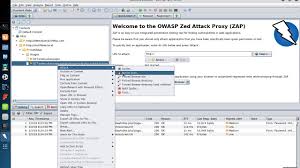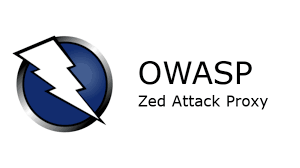In today’s digital age, web application security is a paramount concern. Cyber threats are ever-evolving, and businesses must ensure their applications are secure against potential vulnerabilities. Among the arsenal of tools available for security professionals, OWASP ZAP (Zed Attack Proxy) stands out as a leading open-source solution for identifying vulnerabilities in web applications. This blog explores OWASP ZAP’s capabilities, what it can do, and the types of vulnerabilities it can detect.
What is OWASP ZAP?

OWASP ZAP is a project under the Open Web Application Security Project (OWASP) umbrella. It is a dynamic application security testing (DAST) tool that analyzes web applications during runtime. Designed to be user-friendly and extendable, OWASP ZAP is widely used by security professionals, developers, and even newcomers to cybersecurity.
Released in 2010, OWASP ZAP has grown into one of the most popular security tools in the world. Its open-source nature means it is free to use, modify, and distribute. Additionally, its robust community continuously contributes to its development, ensuring that it remains relevant to modern security challenges.
Key Features of OWASP ZAP
OWASP ZAP offers a plethora of features designed to assist in discovering and mitigating security vulnerabilities. Here are some of its standout capabilities:
1. Proxy-Based Scanning
OWASP ZAP acts as a proxy between your browser and the web application. This allows it to intercept and analyze traffic, making it possible to identify security issues in real time.
2. Automated Scanning
With its automated scanner, OWASP ZAP can quickly identify common vulnerabilities in web applications. This feature is particularly useful for preliminary assessments.
3. Manual Penetration Testing
OWASP ZAP provides tools like intercepting proxy, fuzzers, and HTTP request editors, which enable security professionals to perform detailed manual penetration testing.
4. Active Scanning
Active scanning involves actively probing the application to find vulnerabilities. While this can be intrusive and may impact application performance, it is highly effective in identifying security flaws.
5. Passive Scanning
Passive scanning, on the other hand, is non-intrusive. It monitors traffic without directly interacting with the application, making it ideal for scenarios where application stability is critical.
6. Extensibility
OWASP ZAP supports add-ons and plugins, allowing users to customize and extend its functionality. The ZAP Marketplace offers a wide range of extensions to enhance its capabilities.
7. Spidering
The spidering feature crawls a web application to discover all its resources, including hidden pages. This ensures that all parts of the application are tested.
8. API Testing
With its robust API support, OWASP ZAP can test REST, SOAP, and GraphQL APIs. This is particularly important as APIs become increasingly integral to modern applications.
9. Integration with CI/CD Pipelines
OWASP ZAP can be integrated into continuous integration and continuous deployment (CI/CD) pipelines, enabling organizations to automate security testing as part of their development lifecycle.
10. Report Generation
OWASP ZAP provides detailed reports that outline identified vulnerabilities, their severity, and recommended remediation steps.
What Can OWASP ZAP Do?
OWASP ZAP is a versatile tool that can perform a wide range of tasks related to web application security. Below are some of its primary use cases:
1. Identify Common Web Vulnerabilities
OWASP ZAP excels at finding common web vulnerabilities such as:
SQL Injection
Cross-Site Scripting (XSS)
Cross-Site Request Forgery (CSRF)
Broken Authentication and Session Management
Insecure Direct Object References (IDOR)
2. Test API Security
APIs are a critical component of modern applications. OWASP ZAP can test APIs for vulnerabilities such as:
Improper access controls
Unvalidated inputs
Authentication and authorization flaws
3. Assess Application Logic
By allowing manual testing, OWASP ZAP helps assess complex business logic vulnerabilities that automated scanners might miss.
4. Security Regression Testing
OWASP ZAP can be used to ensure that previously identified vulnerabilities have been fixed and do not reappear in subsequent releases.
5. Training and Education
Due to its user-friendly interface and comprehensive features, OWASP ZAP is an excellent tool for training and educating developers and security professionals on web application security.

Types of Vulnerabilities Detected by OWASP ZAP
OWASP ZAP’s comprehensive scanning capabilities allow it to detect a wide variety of vulnerabilities, including but not limited to:
1. Injection Attacks
These occur when untrusted data is sent to an interpreter as part of a command or query. Examples include:
SQL Injection
Command Injection
LDAP Injection
2. Cross-Site Scripting (XSS)
XSS attacks allow attackers to inject malicious scripts into web pages viewed by other users. OWASP ZAP can detect both reflected and stored XSS vulnerabilities.
3. Cross-Site Request Forgery (CSRF)
CSRF attacks force authenticated users to perform unwanted actions. OWASP ZAP helps identify applications that lack proper CSRF protections.
4. Broken Authentication
OWASP ZAP can test for issues such as weak passwords, session fixation, and insecure password recovery mechanisms.
5. Sensitive Data Exposure
OWASP ZAP identifies weaknesses in the protection of sensitive data, such as:
Insufficient encryption
Improper handling of sensitive information in URLs
6. Security Misconfigurations
Misconfigurations are a common source of vulnerabilities. OWASP ZAP can detect:
Open administrative interfaces
Default accounts and credentials
Insecure headers
7. Insecure Direct Object References (IDOR)
IDOR vulnerabilities occur when an application exposes references to internal objects without proper access control.
8. Unvalidated Redirects and Forwards
OWASP ZAP can detect unsafe redirects and forwards that could lead to phishing or malicious activities.
How to Use OWASP ZAP Effectively
To maximize the effectiveness of OWASP ZAP, consider the following best practices:
1. Understand the Scope
Define the scope of your testing clearly. This includes specifying which parts of the application and which functionalities to test.
2. Combine Automated and Manual Testing
While OWASP ZAP’s automated scanner is powerful, manual testing is essential for uncovering complex vulnerabilities.
3. Integrate with Development Pipelines
Integrating OWASP ZAP into CI/CD pipelines ensures that security testing is a continuous process.
4. Keep It Updated
Regularly update OWASP ZAP and its extensions to ensure you benefit from the latest features and vulnerability checks.
5. Review Reports Thoroughly
Analyze the reports generated by OWASP ZAP to understand the vulnerabilities and prioritize their remediation based on severity.
OWASP ZAP: The Pros and Cons

Pros:
Open Source and Free: Cost-effective for organizations of all sizes.
User-Friendly: Intuitive interface suitable for both beginners and experts.
Comprehensive: Covers a wide range of vulnerabilities and supports manual and automated testing.
Community Support: Backed by a robust community that provides regular updates and support.
Cons:
While OWASP ZAP is a powerful tool, it has its limitations:
False Positives: Like any automated tool, OWASP ZAP may generate false positives that require manual verification.
Intrusiveness: Active scanning can impact application performance and should be used with caution.
Limited Logic Testing: Complex business logic vulnerabilities often require manual testing.
Conclusion
OWASP ZAP is a versatile and invaluable tool for web application security. Its ability to detect a wide range of vulnerabilities, combined with its user-friendly interface and extensibility, makes it a must-have for any security professional’s toolkit. By integrating OWASP ZAP into the development lifecycle, organizations can proactively identify and address security issues, ensuring robust protection against cyber threats.
Whether you are a seasoned security professional or just starting in the field, OWASP ZAP provides the features and flexibility needed to safeguard your web applications effectively. Start exploring its capabilities today to enhance your application security posture.
References
Why Businesses Trust SecureMyOrg for Comprehensive Network Security
At SecureMyOrg, we uncover and fix all possible security vulnerabilities of mobile and web, while providing solutions to mitigate risks. We are trusted by renowned companies like Yahoo, Gojek and Rippling, and with 100% client satisfaction, you’re in safe hands!







Some of the things people reach out to us for –
- Building their cybersecurity program from scratch – setting up cloud security using cost-effective tools, SIEM for alert monitoring, building policies for the company
- Vulnerability Assessment and Penetration Testing ( VAPT ) – We have certified professionals, with certifications like OSCP, CREST – CPSA & CRT, CKA and CKS
- DevSecOps consulting
- Red Teaming activity
- Regular security audits, before product release
- Full time security engineers.
